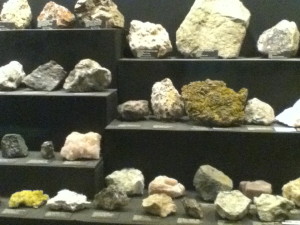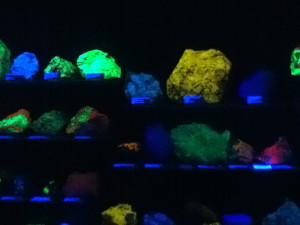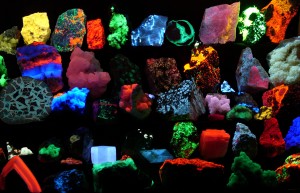Certain materials will emit visible light a short time after absorbing ultraviolet light. This process is called fluorescence. Ultraviolet light has a shorter wavelength than visible light, and our eyes are not capable of seeing ultraviolet light. We can see the emitted light because it has a longer wavelength and is in the part of the spectrum that our eyes can detect.
Our family recently visited the Rice Northwest Museum of Rocks and Minerals in Hillsboro, Oregon, and I was fascinated with their display of fluorescent minerals! It is really a sight to see. Had I known what treasures filled this museum, I would have visited years ago. (You can even save on admission by picking up a Cultural Pass at the library.)

Minerals in normal lighting

Minerals emitting visible light after absorbing ultraviolet light
The lighting on the minerals automatically alternates between normal room lighting, long wave ultraviolet light, and short wave ultraviolet light, so it is easy to compare the appearance of the minerals in each type of light.
This excellent photo showing a variety of colors being emitted is from Wikipedia.

